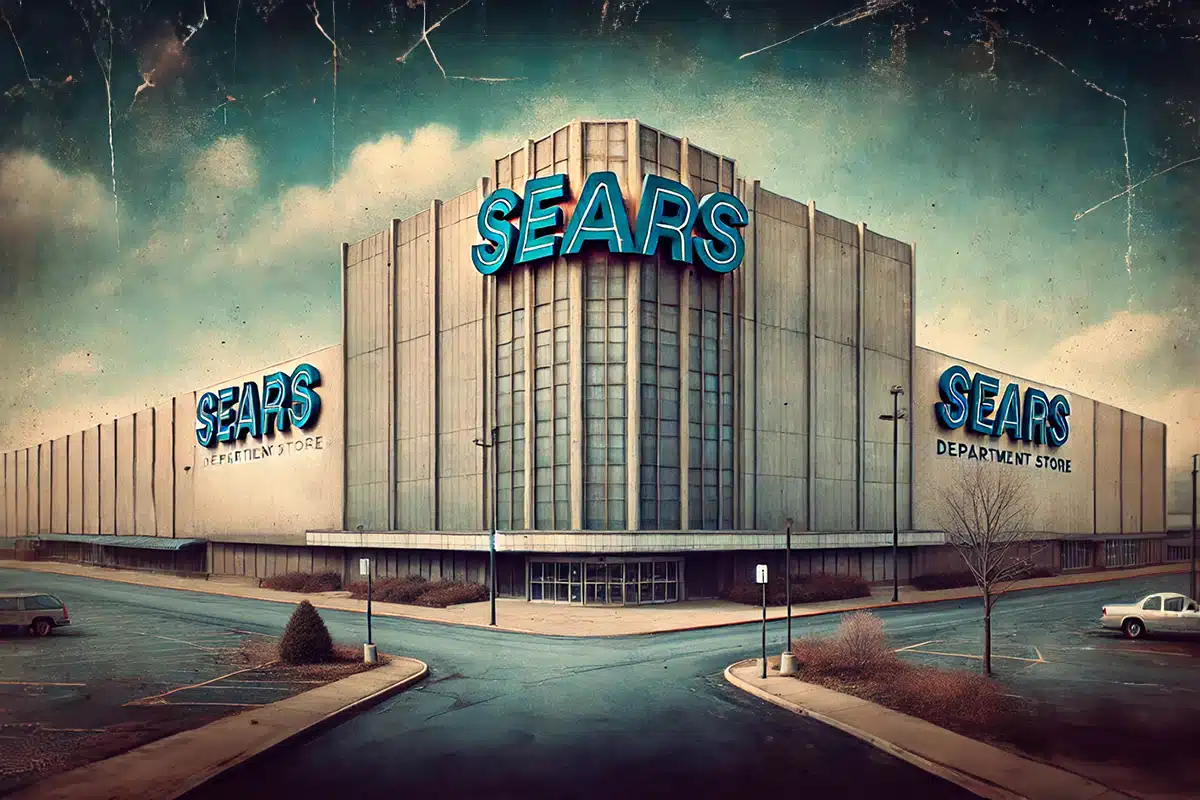
In the late 19th century, an ambitious watchmaker named Richard Sears had a vision that would revolutionize the way Americans shopped. Along with his partner, Alvah Roebuck, he founded Sears, Roebuck & Co., a mail-order catalog company that brought an unparalleled variety of products directly to consumers’ homes. At a time when most people had to travel to local stores to purchase goods, the Sears catalog was a marvel that offered everything from clothing and tools to entire houses and even automobiles.
By the mid-20th century, Sears had grown into a retail giant. Its transition from mail-order to brick-and-mortar stores was seamless, with department stores sprouting up in cities and towns across the United States. At its peak in the 1970s, Sears was the largest retailer in the world, a name synonymous with American retail. Families flocked to Sears for their everyday needs, trusting the brand’s promise of quality and value.
But as the century turned, the once mighty retailer began to falter. The early 2000s marked the beginning of a slow and painful decline, one that would eventually lead to the company’s downfall.
The world of retail was changing rapidly. The rise of the internet brought about a seismic shift in consumer behavior, as more and more people began shopping online. Companies like Amazon emerged as pioneers of e-commerce, offering convenience, competitive pricing, and an endless array of products delivered right to customers’ doorsteps. Yet, while the retail landscape was transforming, Sears remained stubbornly rooted in its old ways.
Rather than embracing this new digital frontier, Sears hesitated. The company was slow to invest in its online presence, missing a crucial opportunity to stay competitive in a rapidly evolving market. As consumers increasingly turned online for their shopping needs, Sears’ reluctance to adapt became glaringly apparent.
Meanwhile, as competitors like Target and Walmart continued to innovate, Sears’ physical stores began to show their age. What were once bustling hubs of activity became neglected, outdated spaces that no longer attracted the modern shopper. Customers, who had once been loyal to the brand, started to look elsewhere after becoming frustrated by the declining quality of the stores and the lack of investment in the customer experience.
In 2005, the fate of Sears took another turn when hedge fund manager Eddie Lampert acquired the company and merged it with Kmart. But instead of revitalizing the brand, the merger only accelerated its decline. Lampert’s focus on cost-cutting led to underinvestment in crucial areas like store maintenance and innovation. In an effort to raise quick cash, Sears began selling off valuable assets, including its beloved Craftsman brand and prime real estate locations. These moves may have provided short-term financial relief, but they stripped the company of the very resources it needed to thrive in the long run.
As Sears struggled to find its footing, the competition was only getting stronger. Specialized retailers like Home Depot and Best Buy carved out their niches, offering focused product selections and superior customer service. Big-box stores and online platforms became the go-to destinations for shoppers, leaving Sears to grapple with an identity crisis. It had once been the store that offered everything, but now it was struggling to be anything at all.
By the time the company recognized the full extent of the challenges it faced, it was too late. Years of mismanagement, strategic missteps and a failure to innovate had taken their toll. The once-dominant retailer was now a shadow of its former self, and its vast network of stores had become reduced to a handful of struggling locations. After years of decline, Sears filed for bankruptcy in 2018, marking the end of an era.
The rise and fall of Sears is more than just a story of a company that lost its way. It is a cautionary tale for businesses everywhere. It serves as a powerful reminder of the importance of adaptation and innovation. In a world that moves faster than ever, no company can afford to stand still.
Sears’ downfall highlights the risks of complacency. As the retail environment evolved, Sears clung to outdated practices, failing to recognize the importance of e-commerce and the need to invest in a modern customer experience. Their reluctance to embrace change cost them dearly.
Moreover, the story of Sears underscores the danger of focusing too much on short-term gains at the expense of long-term success. The decision to sell off valuable assets may have provided temporary financial relief, but it also weakened the company’s ability to compete. In the end, Sears could not overcome the consequences of these decisions.
As the dust settles on the legacy of Sears, the lessons from its story remain clear. Businesses must be willing to evolve, innovate and prioritize the needs and expectations of their customers. Those that fail to do so risk following in the footsteps of Sears, from towering success to an untimely demise.
Resolution Promotions is in no way affiliated with Sears or its subsidiary partners. This blog post is simply a historical review from a business and marketing perspective.



